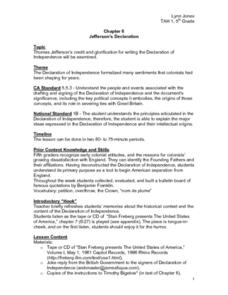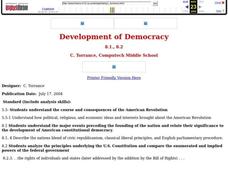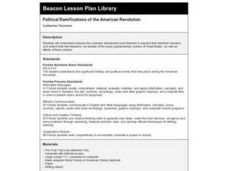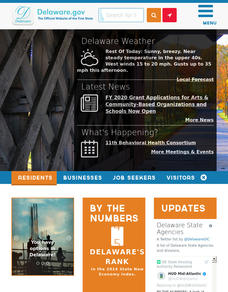Curated OER
Jefferson's Declaration
Fifth graders understand the people and events associated with the
drafting and signing of the Declaration of Independence and the document's significance. They identify the Founding Fathers and
their affiliations. As the lesson...
Curated OER
The Abolitionist Movement
Students examine the Abolitionist Movement in Delaware. In groups, they examine a petition presented to the general assembly and an anti-slavery broadside. They compare and contrast the two documents and develop their own broadside to...
Curated OER
The Normal Distribution
Learners investigate normal distribution. For this statistical analysis lesson students investigate the variety of circumstances in which the normal distribution can be used. Learners apply the normal distribution to solve problems.
Curated OER
Transcription of Lord Dunmore’s Proclamation
In this primary source analysis worksheet, students read Lord Dunmore's Proclamation and discuss its historical significance.
Curated OER
Development of Democracy
Eighth graders examine the road to the American Revolution. In this Boston Massacre lesson, 8th graders investigate the testimony of Captain Thomas Preston. Students write their own verdicts based on his testimony.
Curated OER
Revolutionary Money
Examine paper money from the American revolution! Historians study the paper bills and discuss the history of money. How has money changed over the times? Activities are included.
Curated OER
We The People: A History
Students play a game about taxation where they have tax collectors that simulate the feelings and reasons that led to the American Revolution. In this taxation lesson plan, students learn about why the people in the colonies were so...
Curated OER
Political Ramifications of the American Revolution
Students, in groups, research a topic from the Revolutionary War. They present their research to the class as a review and the instructor summarizes important information. They take a test on the presented topics.
Curated OER
The Townshend Acts of 1767
Students examine the events leading up to and after the Townshend Acts in Boston. In this American History instructional activity, students engage in a class discussion and write an essay about the failure of the British Stamp Act and...
Curated OER
The Abolitionist Movement
Eleventh graders examine a petition presented by the Quakers to the Delaware General Assembly in 1785 and an anti-slavery broadside published in 1836.
Curated OER
Common Sense Lesson Plan
Learners examine excerpts of "Common Sense" and determine how it influenced the times. Using other primary source documents, they identify the amount of political discourse before and during the American Revolution. They answer questions...
Curated OER
Canadian Studies Exercise
In this Canadian history worksheet, 6th graders review many aspects of Canadian studies. Students complete 10 fill in the blank questions, 5 essay questions and 10 true/false questions.
Curated OER
Modern Greece Fights For Ancient History
Students study the history of Ancient Greece and its society through Internet research. They investigate information about the Parthenon and its marble structures.
Curated OER
And It's All for Charity
Students fight poverty. In this current events lesson, students research the listed Web sites to find out how Red Nose Day was established by Comic Relief to raise funds to fight world poverty.
Curated OER
Read loud: The Media
In this media read aloud activity, learners read a dialogue aloud in pairs. Student A will ask a question about the media, and Student B gives the answer.
















